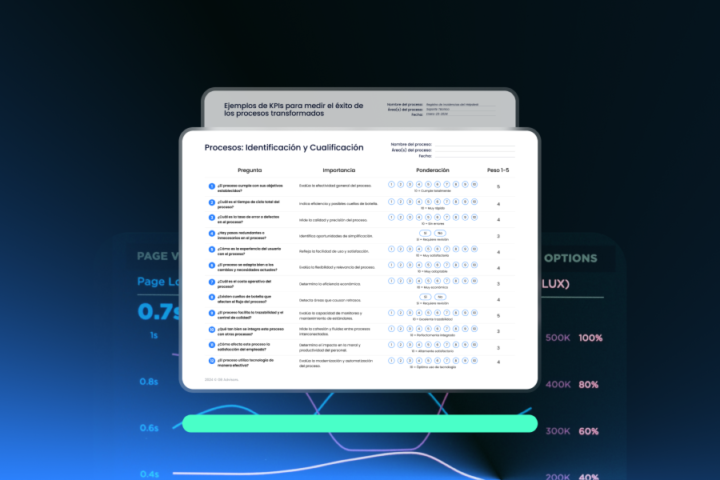 Mobile-first approach forces a company to think analytically about what mobile experience means for its website and other digital channels of communication and networks. However, the main focus of this perspective should be focused on how easily clients and employees can interact with the company through their numerous devices. Thus, your mobile strategy should be determined by your users’ needs since your purpose is to serve them well.
Mobile-first approach forces a company to think analytically about what mobile experience means for its website and other digital channels of communication and networks. However, the main focus of this perspective should be focused on how easily clients and employees can interact with the company through their numerous devices. Thus, your mobile strategy should be determined by your users’ needs since your purpose is to serve them well.
According to Kevin Coppins from EasyVista, mobile-first has become a significant buying principle for many companies in diverse industries, as it has been playing a key role in nearly every customer the previous year. He says that IT has never been more affected by end users’ service expectations like today. For him, the X-factor in service management depends on how companies deliver quality services to the array of mobile devices their users rely on every day. But, is it your company mature enough to assimilate mobile-first approaches?
Thinking on mobile-first approaches
When we talk about enterprise mobility, there are 3 significant stages to indicate the maturity your business has. Whether you work in service management or data security, it is important to identify these levels to resolve processes issues in their early stages. According to Yankee Group, the levels of mobility are:
- Opportunistic: Companies that are still deploying mobility solutions to meet specific use cases individually or experimentally. They lack an enterprise-wide direction and have limited architecture extendibility, supporting those deployments.
- Strategic: These are more forward-looking companies deploying mobile applications to address larger subsets of workers, featuring more sophisticated functionality. They use a definite roadmap along with a more policy-driven approach for delivering their pre-defined business outcomes.
- Mobile-First: There are just a few companies that have reached this stage of enterprise mobile maturity. Mobility, at this stage, is integrated into the whole organization in order to re-envision business processes and transform business processes, driving innovation in a unified way.
 So, if you want to make the best of your Service Management by incorporating mobile-first solutions, you need first to diagnose your mobile maturity level regarding:
So, if you want to make the best of your Service Management by incorporating mobile-first solutions, you need first to diagnose your mobile maturity level regarding:
- Security
- Device management
- Connectivity (back-off)
- App development
- Cultural issues
But if independently of your answers, you want to give a shot on mobile-first solutions to improve your services and taking your first brave steps towards a new era in digital services; what you actually need to do is focusing your attention on your IT team.
Integrating mobile-first solutions for Service Management
Using mobile-first solutions for Service Management represents a step forward to meet the new approaches to deliver services. However, integrating them into your service portfolio may be challenging on several levels.
First of all, and as previously pointed, you need to focus on your IT team and especially, on their skills. Among its capabilities -and abilities- your team must count a) empathy to understand your customers and their needs; b) skill to blend security with intuitive applications. This approach is particularly beneficial if your enterprise has implemented BYOD Policies and counts on Cloud Services as their main approaches to delivery services.
 Following, you have to take into account your infrastructure and its capability to integrate and protect mobile devices and applications on your legacy systems. Achieving this demands a) physical resources; b) a robust knowledge base; c) an integrative plan covering both, human and technical resources towards change management; and d) guaranteeing end-to-end security.
Following, you have to take into account your infrastructure and its capability to integrate and protect mobile devices and applications on your legacy systems. Achieving this demands a) physical resources; b) a robust knowledge base; c) an integrative plan covering both, human and technical resources towards change management; and d) guaranteeing end-to-end security.
Last but not least, we find customers. As they are the final users, you need to know them very well to cover their demands for your services, and making your apps as user-driven as possible. Developing the right apps for them is probably the most challenging part of integrating mobile-first solutions for Service Management. In any case, it’s totally worthy:
Advantages of integrating mobile-first solutions for Service Management
 As smartphones are fully-integrated devices that compile entertainment, social networks, workstations and more; they give to mobile-first solutions the perfect platform to:
As smartphones are fully-integrated devices that compile entertainment, social networks, workstations and more; they give to mobile-first solutions the perfect platform to:
- Work remotely while improving productivity
- Make the most out of your employee’s tech resources
- Give support, track, and respond to customers in Help Desk applications
- Move towards the internet of things and M2M (Machine-to-Machine) communications
- Leverage your business model by easily adopting Cloud services at best pricings
- Integrating SaaS (Software as a Service) to your Service Catalog
- Virtually connecting your customers with your services 24/7
Among the best mobile-first solutions for Service Management, we found EasyVista; a highly-profiled solution for IT organizations from low to high complexity regarding technological maturity that we conveniently put it at your service.
Be one of the more than 1,000 enterprises rely on its capabilities, and more than 6 million users corroborate its great flexibility to deliver service management features to mobile users.



